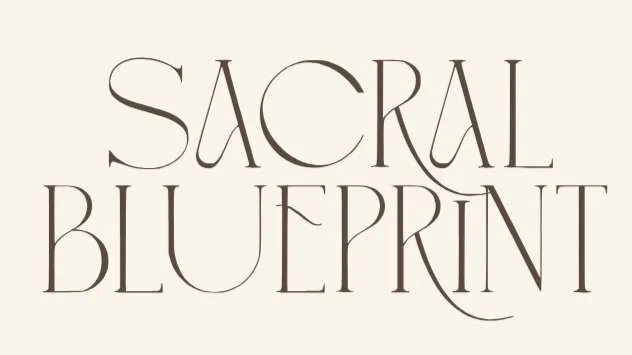Raising the Chart, Not the Child You Imagined: Why Human Design Matters in Parenting
parenting
by design.
You can read every parenting book on the shelf and still feel like you’re walking blind.
Because none of them know your kid’s energy. None of them know your nervous system. And none of them hand you the map to who you’re actually raising.
That’s what Human Design did for me.
Not as a fix-it tool. Not as a way to make my kids calmer, easier, or more “regulated” (whatever that even means). But as a mirror. A map. A permission slip to stop parenting the child I imagined—and start parenting the one who’s right in front of me.
Human Design Found Me First
I didn’t come into this system as a parent. I came in bone-tired—emotionally flooded, chronically overcommitted, and quietly convinced that everyone else got the life manual I must’ve lost.
Human Design cracked me open. Slowly, inconveniently, beautifully.
And once I started understanding my own chart, it became impossible to keep parenting from the old scripts. My emotional waves. My conditioning. My ideas of who my kids should be.
Gone.
Because once you see the blueprint, you can’t go back.
Before Human Design, I Was Parenting from a Script
Reward charts. Timeouts. “Use your words.”
Breathe in for four, out for seven. Gentle parenting with a side of resentment.
I had the Pinterest boards. The affirmations. The gluten-free sensory bins I convinced myself would unlock emotional regulation.
But no matter how many expert blogs I read at 2am, I kept bumping up against the same invisible wall: my kids weren’t following the script. And honestly? Neither was I.
I wasn’t parenting them. I was managing my own fear through them—projecting my anxiety, my urgency, my inner child’s checklist onto two tiny humans who were already clear, if I’d only paused long enough to notice.
Human Design didn’t hand me a strategy. It handed me a mirror.
It gave me sight. The kind that stings a little at first, but softens everything over time.
It helped me stop trying to fix what was never broken.
It showed me that maybe the problem wasn’t them.
Maybe it was the script.
Summer: My Generator with a 1/3 “Trial-and-Error” Profile
Summer is sharp, curious, fast. She wants to test things herself. Doesn’t care how it worked for you—she’ll try it, break it, rebuild it. And when she knows something in her gut? She knows. No amount of adult logic is going to override that.
Before I understood her wiring, I tried to explain too much. Offer too many options. Keep her safe by trying to control her process.
Now? I ask simple, direct questions. I let her test things (safely-ish). I stop trying to catch her before she falls—because half the time, she needs to fall to get the information.
She’s not being difficult. She’s being her.
Sycamore: My Generator with a 6/2 “Wise-Hermit” Profile
Sycamore moves slower. Softer. But there’s this depth in him that knocks the wind out of me sometimes. He’s the kind of kid who knows what’s real and what’s performance—and he’ll shut down the second he feels pushed.
He needs space to retreat, then comes back with clarity when it’s on his terms. He’s not being avoidant. He’s not lazy. He just doesn’t do fake urgency.
When I stopped rushing him—stopped micromanaging his timing—he started opening up. Not with words necessarily, but with presence.
What he needs isn’t pressure. It’s respect.
Parenting This Way Isn’t Gentle. It’s Accurate.
This isn’t about being peaceful and positive 24/7.
It’s about being real.
It’s about knowing the difference between a meltdown and a boundary.
Between disrespect and disconnection.
Between “bad behavior” and a body saying, this doesn’t feel right for me.
Human Design helped me stop reacting to the surface and start listening underneath it.
It helped me realize:
My daughter’s strong will isn’t rebellion—it’s how she learns.
My son’s quiet withdrawal isn’t disinterest—it’s his way of processing.
My own frustration? Isn’t always about them. It’s often about me trying to force clarity before I’m actually clear.
Why Knowing Their Blueprint Matters
Because parenting gets loud. Fast.
And when you don’t understand how your child is wired, it’s easy to fall back into managing, controlling, or overexplaining.
But when you do understand them—even a little?
You stop trying to make them more like you.
You stop calling their natural instincts a “problem.”
You start protecting their essence instead of correcting it.
And that’s the work, isn’t it?
Seeing them clearly enough that they never have to forget who they are to be loved.
You can’t raise your child from intuition alone if you’re still parenting through layers of fear, performance, or conditioning.
Human Design clears the fog.
Not by telling you what to do, but by showing you who they are—and who they’re not.
When you raise the chart, not the child you imagined:
You stop parenting on autopilot.
You stop chasing perfection.
You start creating safety—for them to be fully seen, and for you to let go of who you thought you had to be.
And that?
That’s not just parenting. That’s energetic revolution.
Anyway, I’ll be here, whispering sweet nothings to my nervous system while a small Generator argues with the laws of time and pants.
— Jenn

